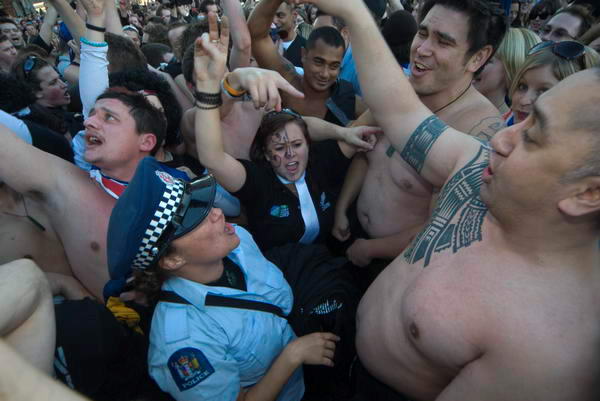Thanks to a friend for pointing me at the presentations now on-line from the 2nd annual Photo Metadata Conference, held in Malta on 5 June 2008, which included the first public presentation of the refurbished IPTC Core and a new IPTC Extension set of photo metadata.
If you feel you missed out on a jolly trip to Malta (and last year’s event was in Florence) then at least you can console yourself at having missed all of the Powerpoint presentations that are now available for download. Most of them actually seem to be saying more or less the same things and at times it seems as if the main interest during the sessions will have been in the colour of the shirts or dresses worn by the presenters.
Not that this is necessarily a bad thing. If you did get there it meant you could have spent your time in the bar and not missed a lot, and it’s good for all of us that there does seem to be considerable agreement over the necessity of metadata and its future direction.
Actually there are a few points of interest, especially for me in a presentation (download it from the programme page) by David Riecks that shows just the pig’s ear that major stock distributors make of it at the moment.
And that is really the root of the problem at the moment. There isn’t a great deal of point in a campaign to get photographers to put the meta-data in if libraries and others shake it all about and remove all or most of it.
Lightroom (and some other programs – but I use Lightroom) has made it relatively easy for photographers to add some essential metadata as a matter of routine when processing their raw files (or even jpegs if you have to shoot jpeg) although I’d like the process to start even earlier with camera manufacturers getting more into the act.
Every picture we shoot digitally now has EXIF data recorded, including the date and time. No photographer should ever find themselves having to enter this data into software manually (though if – as I’ve done at times – we manage to set the wrong year or the wrong time zone, we need to be able to correct it.) Software can pick it up automatically and rewrite it wherever it’s needed.
My camera also allows me to add some user-input data to every picture. It would only add a few bytes to firmware to allow the entry of some specified fields – such as copyright (what my data always contains), e-mail address and perhaps ‘Headline’ which would then be available to software. Which could then, for example copy the files to an appropriately located and named folder when you upload these to your computer, and perhaps also choose appropriate pre-sets for other purposes.
Several of the presentations address some of the real basics that make metadata useful, such as:
- data should never need to be entered twice
- it should be and offence to remove metadata or edit it without permission
(Some copyright lawyers claim removal is already is an offence under copyright law.)
Keywording
Perhaps the discussion that I would have found of most interest was “Keywording versus Controlled Vocabularies” which rather strikes me as a false dichotomy. To make keywording really useful you need a controlled vocabulary, and a controlled vocabulary seems to require some way to use it, which is by keywording. This was a ‘panel discussion’, and what you can download certainly throws little light on the topic.
Perhaps one of the problems is that the same keyword needs to be able to sit in several different hierarchical trees. Yesterday I was adding the keyword ‘Haka’ to some of my images to go in a library (actually I was adding it for a second time, because it was a keyword in the file I was uploading, but the system doesn’t read most of the metadata in the files – so I spend hours and hours re-keying.)

Haka in Parliament Square for Waitangi Day
If I was setting up a keywording system using a controlled vocabulary I might want to include Haka in a heirachy part of which would look like this:
>Country>New Zealand>Maori>Culture>Haka
but I might also want to include it in a hierarchy that was cross-cultural and looked at various types of dance and their function, part of which would look like this:
>dance>war dance>Haka
or perhaps we might want to look at it in yet other ways.
How we make such links is important both in keywording and also even more so in developing smart methods of searching – which is really the important end of the process.
PLUS
Something that I think we will hear more about is PLUS, the Picture Licensing Universal System, which will provide a single world-wide system for describing licences and to embed licensing information as metadata in images. It won’t replace IPTC, but provides only licence-related information – including of course address and copyright details. It seems it will be free to use, although I’m not sure whether non-members of PLUS will be included in their seachable creator data-base when this is up and running. Widespread adoption of PLUS would give added protection to image creators and clarify conditions for those wanting to use images.
Of course the success of such a system depends in part on national laws. If the US does decide to do its own coach and horses over so-called “Orphan Rights” (as to some extent it has always done on copyright) it will almost certainly severely weaken the utility of PLUS. But intellectual property rights are increasingly an important part of world trade, and perhaps the age when the US can run the world is coming to an end?